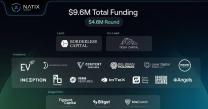 Slow and steady, but Cardano’s Shelley was built diligently and systematically
Slow and steady, but Cardano’s Shelley was built diligently and systematically Slow and steady, but Cardano’s Shelley was built diligently and systematically

Cover art/illustration via CryptoSlate. Image includes combined content which may include AI-generated content.
Charles Hoskinson discussed the effort that went into building Shelley, the upcoming staking era of the Cardano blockchain. The CEO of IOHK said that the company’s “slow and steady” approach to development turned out to be much better in the long run, as it facilitates the creation of an even playing field for every other crypto project on the market.
What to expect from the upcoming Shelley rollout
Few projects in the crypto industry have managed to get the community as divided as Cardano has. While fractions have always formed around projects, it’s rare that the thing that people celebrate the most about a project is the same thing that invites the most criticism.
We’re talking, of course, about Shelley, and Cardano’s notoriously slow development process. In the fast-paced environment that is the crypto market, timelines for launches and major updates seem to be measured in weeks, not months. So, it’s no wonder why IOHK’s five-year diligent research behind Shelley seems like an entire lifetime.
However, it’s that long and tiresome process that is set to make Cardano stand out from the crowd. According to its creator Charles Hoskinson, Cardano is a blockchain that’s meant to be used in the decades to come.
That’s why the launch of Shelley, the era of the blockchain that is set to transform it from a static and federated system to a dynamic and decentralized system, is such a big deal for the company.
In an interview with Lark Davis, the host of The Crypto Lark YouTube channel, Hoskinson discussed why the years of diligent and systematic research that went into Shelley turned out to be more efficient than anybody originally thought it would be.
When asked what the community should expect from the launch of Shelley, Hoskinson said that to understand its implications, we must understand the process behind it. Work on Shelley began back in 2018, with two separate teams working on two distinct versions of the blockchain’s staking era. While one of the teams was working on Shelley parallel to Byron, the other was taking up a more ambitious load by working on a Haskell-based Shelley that would be the end all be all version of the protocol.
However, after the first team failed to produce the results IOHK hoped to achieve, the work being done on the Haskell backend became the finalized version of Shelley that was set to ship the following year.
The Shelley that we’ll be seeing in the following weeks is the product of years of academic research and concrete product development within IOHK, Hoskinson said.
The systematic approach to development was also applied to the product rollout—the launch of Shelley began back in December 2019 with the launch of the Incentivized Testnet (ITN). This process, Hoskinson said, is currently in its final phase—the pioneer testnet.
A select group of stake pool operators that have been actively participating in the ITN are currency testing out the Haskell version of Shelley, going through a series of exercises that would provide feedback to IOHK. As of now, all of the pioneers have completed five out of seven exercises required, Hoskinson said.
What makes Cardano different?
The issue of rivalry in the crypto market is often the most prevailing one. This has been rather unfortunate for Cardano, as the work done by both IOHK and Hoskinson himself is often viewed in relation to Ethereum, Tezos, and other similar projects. Hoskinson’s early involvement with Ethereum, which he helped found, does little to help the issue.
However, the work being done both by IOHK and the Cardano community is doing a rather good job shining a light on what makes Cardano stand out from its “competitors”—the fact that it’s not competing with anyone.
Hoskinson said that IOHK took a very unusual approach to designing a blockchain. The process began with reviewing the basics of proof-of-stake protocols and systematically working through all of the security properties proof-of-work algorithms like Bitcoin have. They then had to determine which of these properties could be replaced and improved upon. Hoskinson noted that it “took years” for the company to become confident enough that the proof-of-stake models it was working on were secure and efficient enough to be launched.
Ethereum, on the other hand, took a very different approach, deciding to launch the protocols first and then deal with the problems ad hoc. If none of the solutions worked, the developers went back to the drawing board to come up with a new protocol.
The fact that people believe a foundational approach and formal methods are a slow and inefficient way of writing software “is the single biggest misnomer” in the crypto industry. Hoskinson cited the example of Ouroboros, Cardano’s proof-of-stake algorithm, as being ultimately faster and more efficient than Ethereum’s Casper, which was launched in 2014.
Another important thing that sets Cardano apart is IOHK’s effort to prevent a cult of personality from forming around the project. While Hoskinson’s is the name most often mentioned with Cardano, he stated on numerous occasions that his goal is for the blockchain to be immune to the influence of a single person.
But, how can a system run by everyone compete with the amount of network effect a personality-led project such as Ethereum has?
“You have to change the game to win the game,” Hoskinson said.
With its work on Cardano, IOHK, the Cardano Foundation, and Emurgo are all trying to create a level playing field for everyone. All of the work that has come out of IOHK is freely available and open-source, and the company declared that it would never pursue patents on any of the technologies it develops in hopes that if other projects adopt them it would make interoperability organic. This, Hoskinson said, is diametrically opposed to what Ethereum wants to achieve.
“What ConsenSys and Ethereum are trying to do to the ecosystem, and it’s so very damaging, is they’re trying to lock people in. They’re building all this tooling and saying you’re stuck on Ethereum.”
Cardano, on the other hand, wants to enable migration from one system to another as it believes it would make blockchains more attractive to businesses.
“No business would want to be in a business where they can’t change their backend.”
The crypto industry isn’t a sum zero game, he explained. There is sufficient space and demand for many projects in the ecosystem to grow to trillion-dollar market caps and create healthy competition that enables users to choose from a variety of options. Hoskinson compared this to the huge tech giants such as Windows and Apple that operate in the same space, attracting customers based on philosophy and quality of service.
Cardano Market Data
At the time of press 11:44 pm UTC on May. 28, 2020, Cardano is ranked #11 by market cap and the price is up 16.6% over the past 24 hours. Cardano has a market capitalization of $1.66 billion with a 24-hour trading volume of $312.96 million. Learn more about Cardano ›
Crypto Market Summary
At the time of press 11:44 pm UTC on May. 28, 2020, the total crypto market is valued at at $263.62 billion with a 24-hour volume of $104.24 billion. Bitcoin dominance is currently at 66.11%. Learn more about the crypto market ›






































































